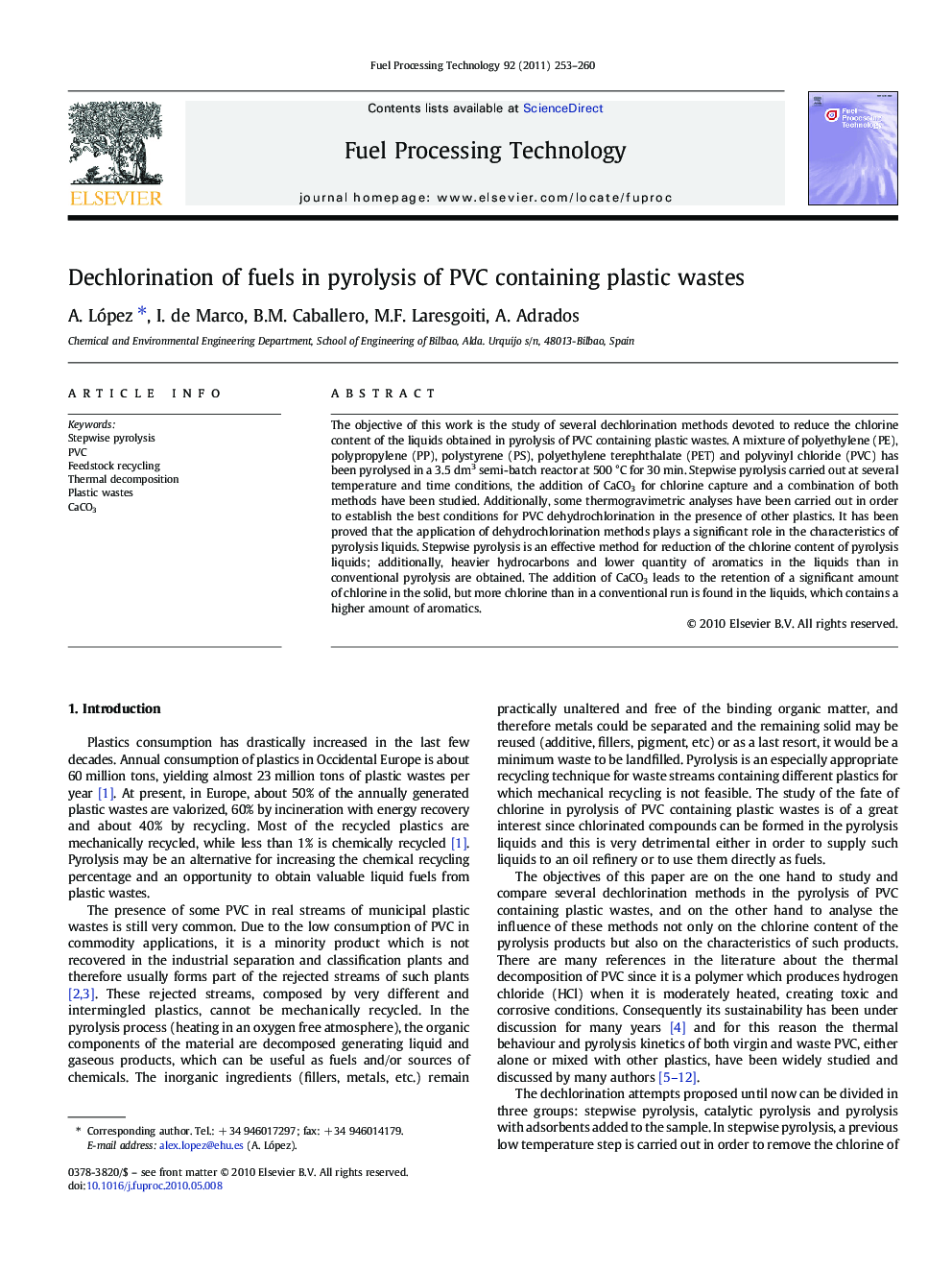| Article ID | Journal | Published Year | Pages | File Type |
|---|---|---|---|---|
| 210479 | Fuel Processing Technology | 2011 | 8 Pages |
The objective of this work is the study of several dechlorination methods devoted to reduce the chlorine content of the liquids obtained in pyrolysis of PVC containing plastic wastes. A mixture of polyethylene (PE), polypropylene (PP), polystyrene (PS), polyethylene terephthalate (PET) and polyvinyl chloride (PVC) has been pyrolysed in a 3.5 dm3 semi-batch reactor at 500 °C for 30 min. Stepwise pyrolysis carried out at several temperature and time conditions, the addition of CaCO3 for chlorine capture and a combination of both methods have been studied. Additionally, some thermogravimetric analyses have been carried out in order to establish the best conditions for PVC dehydrochlorination in the presence of other plastics. It has been proved that the application of dehydrochlorination methods plays a significant role in the characteristics of pyrolysis liquids. Stepwise pyrolysis is an effective method for reduction of the chlorine content of pyrolysis liquids; additionally, heavier hydrocarbons and lower quantity of aromatics in the liquids than in conventional pyrolysis are obtained. The addition of CaCO3 leads to the retention of a significant amount of chlorine in the solid, but more chlorine than in a conventional run is found in the liquids, which contains a higher amount of aromatics.
